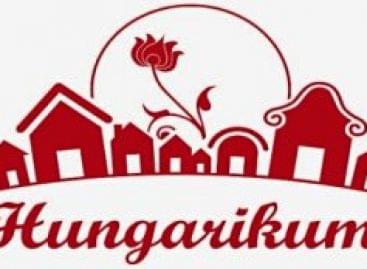Hövej lace and Pozsonyi crescent became Hungarikum
Pursuant to the decision of the Hungarikum Committee, Hövej lace and Pozsonyi crescent have been added to the Collection of Hungarikums – the Minister of Agriculture announced at his press conference in Budapest on Tuesday.

Meeting of the Hungarikum Committee (Photo: Csaba Pelsőczy)
Explaining the board’s rationale, István Nagy said that the unique variety of Hövej lace dates back to the 19th century, and quickly gained fame for the village in the Győr-Moson-Sopron county. It was awarded a gold medal at the 1962 World Exhibition in Brussels, and since 2017 it has been part of UNESCO’s national list of intellectual cultural heritage. The Pozsonyi crescent could become a hungarikum as a traditional Hungarian cake for the winter holidays. Its first recipe is known from István Czifray’s Hungarian national cookbook, published in 1830, and since 2012 it has been called a traditional special product – added the Minister of Agriculture.
That’s why Hungarians are important
Hungarians are the everyday and ubiquitous building blocks of the country’s image, which without words tell the story of the Hungarians, their traditions, and their ingenuity – emphasized the head of the ministry, who encourages all communities to mark their traditions in the local treasure troves, because they are then national values. they can even be Hungarians. It is a common task to make the world familiar with and fall in love with the country’s excellent food and drinks, its wonderful natural resources, its artistic heritage, and the performance of Hungarian talents. The protection of values also helps the preservation of identity and tradition, and the passing on of culture, not with the need for separation, but for national unity – emphasized István Nagy.
The Prime Minister’s Commissioner responsible for the protection of the Hungarian way of life and our national values reported on the expansion of the Hungarian Valuables
Zsolt V. Németh announced that flame, which today is known and loved not only by Hungarians, was declared an outstanding national value, as well as cubism, which became famous in the second half of the 19th century, during the construction of canals, roads and railways in the Great Plain, as a characteristically Hungarian migrant worker activity. Although it lost its importance with the spread of machines, its memory is still alive today, the city of Csongrád even erected a statue to the Cubists, he added.
According to the law that entered into force on July 1, 2012, Hungarian products are the peak achievements of Hungarians with their characteristics, uniqueness, specialness, and quality. The Hungarian Treasures Collection is followed by the Hungarian Treasury, which contains outstanding national values, and the foundations of the value pyramid are made up of county, sectorial and foreign treasure troves. After the 31st meeting of the Hungarikum Committee, 87 national values belong to the Collection of Hungarikumok, and 150 national values belong to the Hungarian Valuables Store.
MTI
Related news
Hungaricums show the diversity of Hungarian identity
🎧 Hallgasd a cikket: Lejátszás Szünet Folytatás Leállítás Nyelv: Auto…
Read more >AM: new items added to the Hungarikum Collection and the Hungarian Heritage Archive
🎧 Hallgasd a cikket: Lejátszás Szünet Folytatás Leállítás Nyelv: Auto…
Read more >Beach buffets are getting more expensive: the average price of a “beach combo” at Lake Balaton is now 4,289 forints
🎧 Hallgasd a cikket: Lejátszás Szünet Folytatás Leállítás Nyelv: Auto…
Read more >Related news
CDs and DVDs are experiencing a renaissance at Vatera, but second-hand LEGO is the real star of this Christmas
🎧 Hallgasd a cikket: Lejátszás Szünet Folytatás Leállítás Nyelv: Auto…
Read more >Christmas tree shopping is also going digital: demand for online ordering is growing rapidly
🎧 Hallgasd a cikket: Lejátszás Szünet Folytatás Leállítás Nyelv: Auto…
Read more >NGM and VOSZ cooperation agreement for the security of digital commerce
🎧 Hallgasd a cikket: Lejátszás Szünet Folytatás Leállítás Nyelv: Auto…
Read more >






